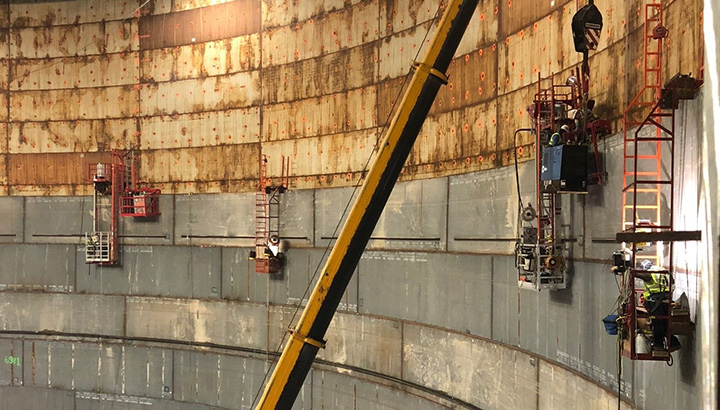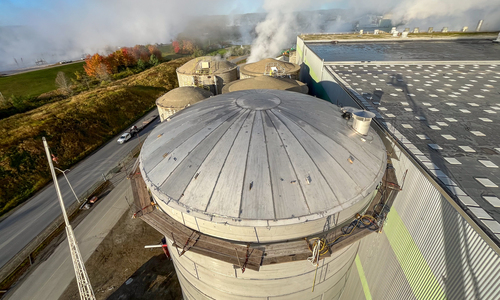Ensuring Compliance Through API 650 Welding Inspection Best Practices
Wiki Article
Recognizing the Significance of Welding Evaluation in Quality Assurance Processes
Welding examination is a crucial element of quality control in building and manufacturing. It guarantees that welds adhere to well-known requirements, which is essential for architectural stability. Numerous evaluation methods, from visual to ultrasonic testing, aid recognize flaws early. This positive technique not only prevents costly repair work yet also improves safety. Recognizing the nuances of welding evaluation can disclose its broader ramifications for market compliance and credibility. API 650 Welding Inspection. What lies under the surface area of these techniques?The Duty of Welding Evaluation in High Quality Assurance
While welding is a crucial process in numerous sectors, its high quality and honesty pivot substantially on reliable evaluation techniques. Welding assessment acts as a protect, guaranteeing that welds meet well-known standards and specifications. This procedure not just recognizes defects yet also assesses the total workmanship, thereby adding to the safety and security and durability of bonded frameworks. Examinations are important to quality assurance, as they assist maintain and stop expensive failures compliance with sector guidelines. By using proficient assessors, organizations can enhance their operational efficiency and promote their credibilities. Additionally, the insights got from examinations can notify continual renovation, bring about far better approaches and training for welders. Inevitably, welding evaluation acts as a vital web link in the top quality assurance chain, making sure that every joint is capable and reliable of standing up to the roughness of its intended application. This diligence is crucial for the integrity of framework and the security of end users.Kinds of Welding Inspections
Welding assessments encompass a series of techniques designed to evaluate the quality and stability of welds. These examinations are crucial in ensuring conformity with sector requirements and specifications. Common kinds of welding inspections consist of visual assessment, which permits immediate recognition of surface irregularities; ultrasonic screening, which makes use of high-frequency acoustic waves to spot interior imperfections; and radiographic testing, using X-rays or gamma rays to disclose weld honesty beneath the surface area (API 650 Welding Inspection). Furthermore, magnetic fragment screening is made use of to determine surface area and near-surface gaps in ferromagnetic products, while dye penetrant testing uses a technique for disclosing surface-breaking problems. Each kind of evaluation serves a certain purpose, adding to the total top quality guarantee process. By using a mix of these methods, examiners can give a thorough evaluation of welding quality, inevitably guaranteeing the safety and integrity of bonded structuresCommon Defects Detected in Welding
A selection of common problems can take place during the welding process, influencing the honesty and performance of bonded frameworks. These flaws include porosity, which includes entraped gas pockets within the weld, damaging its stamina. Splits may likewise create as a result of fast cooling or incorrect joint style, bring about potential failure under stress and anxiety. Insufficient blend happens when there wants melting of the base steel, causing weak bonds. An additional issue, undercutting, includes the elimination of base metal along the weld edge, creating a significant structural weakness. In addition, too much spatter can affect the appearance and demand additional cleaning or fixing. Finally, imbalance can lead to irregular weld grains, compromising the general high quality. Determining these flaws early with appropriate examination methods is important to guarantee the reliability and safety of welded elements, inevitably securing the performance of the entire framework.
Advantages of Routine Welding Examinations
Routine assessments play a significant duty in maintaining the high quality and safety and security of bonded frameworks, particularly in light of the common flaws formerly laid out. These evaluations give an opportunity to determine and remedy concerns prior to they escalate right into serious problems, making certain structural stability. By spotting problems early, organizations can reduce repair work costs and avoid potential job delays.In addition, routine Get More Information welding assessments enhance conformity with industry standards and guidelines, cultivating trust fund amongst stakeholders. This adherence not just shields the business's online reputation but also adds to improved security for workers and the general public.
Additionally, consistent evaluations promote much better training and skill growth for welders, as comments from inspections can guide improvements. Ultimately, the advantages of regular welding assessments prolong beyond prompt high quality assurance, advertising long-lasting operational efficiency and dependability in welded structures.
Finest Practices for Effective Welding Assessment
Applying ideal practices in welding inspection is necessary for ensuring the highest possible requirements of quality and safety. First, examiners have to be sufficiently educated and certified, having a thorough understanding of welding strategies and products. Utilizing advanced inspection technologies, such as ultrasonic screening and radiography, improves the detection of issues that may not show up to the nude eye. Establishing a clear inspection strategy, describing the requirements and frequency of evaluations, warranties uniformity and thoroughness.

Recording all findings thoroughly is crucial for traceability and liability. Routine calibration of inspection tools assures accuracy, while preserving a organized and tidy work area decreases the risk of contamination. In addition, cultivating open interaction amongst group members facilitates the sharing of insights and promotes a culture of high quality. By adhering to these best techniques, companies can notably improve their welding quality control procedures, inevitably causing more secure and extra reliable items.

Frequently Asked Concerns
What Credentials Are Required for a Welding Inspector?
A welding inspector usually requires qualification from recognized organizations, such as the American Welding Society (AWS) or the International Institute of Welding (IIW), in addition to appropriate experience and understanding in welding procedures and high quality criteria.Exactly How Often Should Welding Inspections Be Carried Out?
Welding examinations should be executed routinely, generally at numerous project stages, including before, throughout, and after welding processes - API 650 Welding Inspection. The frequency frequently depends on job requirements, regulatory demands, and the intricacy of the welds entailed
What Are the Prices Connected With Welding Examinations?
The expenses associated read here with welding examinations vary widely, normally ranging from a few hundred to a number of thousand bucks, depending upon variables like assessment type, task size, and area, influencing general job budgets and timelines.Can Welding Inspections Be Conducted From Another Location?
Yes, welding assessments can be carried out remotely using advanced modern technologies such as drones, explanation cams, and ultrasonic screening. These approaches allow examiners to evaluate weld honesty without being physically present, boosting effectiveness and security in different atmospheres.Just How Do Assessment Outcomes Impact Job Timelines?
Examination results can substantially influence job timelines by recognizing flaws early, bring about needed rework or adjustments. Delays might occur if examinations expose concerns requiring resolution, eventually affecting overall project conclusion and budget adherence.Welding evaluations incorporate a range of techniques designed to review the top quality and honesty of welds. Common types of welding examinations include visual examination, which allows for prompt recognition of surface area irregularities; ultrasonic screening, which makes use of high-frequency audio waves to discover interior imperfections; and radiographic screening, using X-rays or gamma rays to expose weld integrity underneath the surface. Regular assessments promote better training and ability advancement for welders, as feedback from evaluations can direct renovations. Carrying out ideal practices in welding inspection is vital for guaranteeing the greatest requirements of top quality and safety and security. Welding assessments ought to be done consistently, typically at various project phases, including prior to, during, and after welding procedures.
Report this wiki page